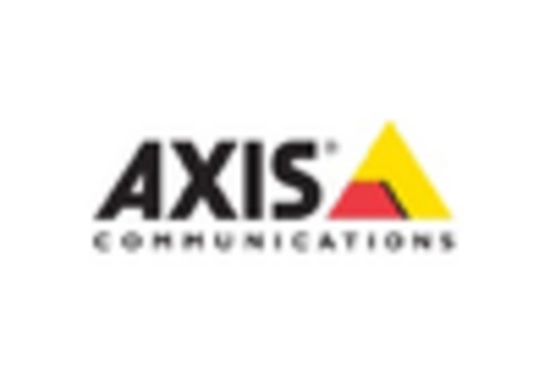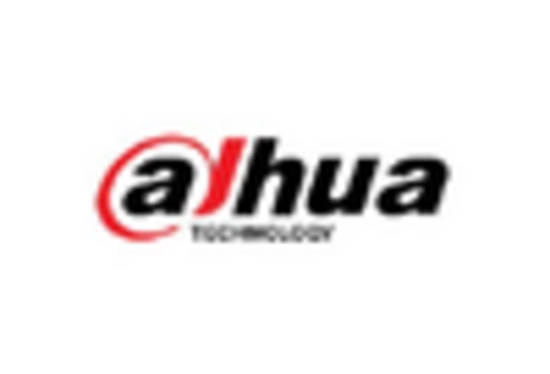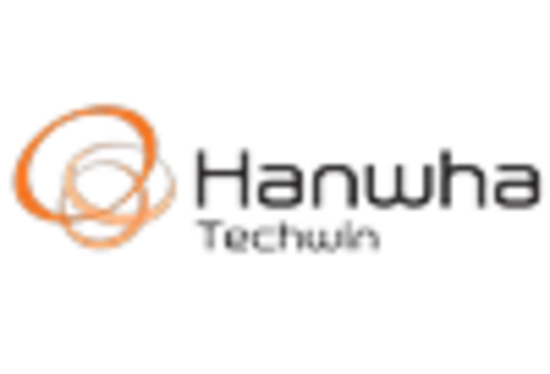The AI in Surveillance Market is currently characterized by a dynamic competitive landscape, driven by rapid technological advancements and increasing demand for enhanced security solutions. Key players such as Hikvision (China), Dahua Technology (China), and Axis Communications (Sweden) are at the forefront, each adopting distinct strategies to solidify their market positions. Hikvision (China) focuses on innovation through continuous investment in R&D, aiming to enhance its AI capabilities in video analytics. Conversely, Dahua Technology (China) emphasizes regional expansion, particularly in emerging markets, to capture a broader customer base. Axis Communications (Sweden) is strategically positioned towards digital transformation, integrating AI with IoT to offer comprehensive surveillance solutions. Collectively, these strategies contribute to a competitive environment that is increasingly reliant on technological differentiation and market responsiveness.
In terms of business tactics, companies are localizing manufacturing and optimizing supply chains to enhance operational efficiency and reduce costs. The market structure appears moderately fragmented, with several players vying for market share. However, the influence of major companies is substantial, as they set industry standards and drive innovation. This competitive structure fosters an environment where smaller firms must innovate or collaborate to remain relevant.
In August 2025, Hikvision (China) announced a partnership with a leading AI research institute to develop next-generation facial recognition technologies. This collaboration is poised to enhance Hikvision's product offerings, allowing for more sophisticated surveillance solutions that could potentially redefine industry benchmarks. The strategic importance of this partnership lies in its potential to leverage cutting-edge research, thereby maintaining Hikvision's competitive edge in a rapidly evolving market.
In September 2025, Dahua Technology (China) launched a new line of AI-powered surveillance cameras designed specifically for urban environments. This product line aims to address the unique challenges of city surveillance, such as crowd management and traffic monitoring. The introduction of these cameras signifies Dahua's commitment to innovation and its strategic focus on urban security solutions, which are increasingly in demand as cities expand.
In October 2025, Axis Communications (Sweden) unveiled a cloud-based analytics platform that integrates AI capabilities for real-time data processing. This platform is expected to enhance the functionality of existing surveillance systems, providing users with actionable insights. The strategic significance of this development lies in Axis's ability to offer a comprehensive solution that not only improves security but also adds value through data analytics, thereby reinforcing its market position.
As of October 2025, current competitive trends in the AI in Surveillance Market are heavily influenced by digitalization, sustainability, and the integration of AI technologies. Strategic alliances are increasingly shaping the landscape, as companies recognize the need for collaboration to drive innovation and meet evolving customer demands. Looking ahead, competitive differentiation is likely to shift from price-based strategies to a focus on technological innovation, reliability in supply chains, and the ability to deliver comprehensive, integrated solutions that address complex security challenges.


















Leave a Comment